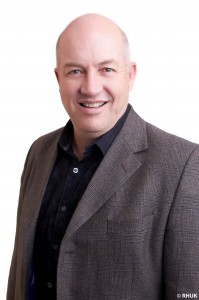The Arts and Peacebuilding was a coming together of students, faculty, and community leaders around the theme of art and its  relationship to peacebuilding.
relationship to peacebuilding.
The first presenter, Michael Williams, Butler University Department of Theatre Christel DeHaan Visiting International Theatre Artist, a prize-winning author and accomplished opera director, began his keynote speech with an anecdote from his teenage years in South Africa where a group of colored students were denied entrance to his play. He explained how his regret at not standing up to this intolerance has shaped his art ever since, a tool he now uses for challenging perceptions through the exploration of conflict. Matthew Boulton, President of Christian Theological Society, expanded on Williams idea of art as a way to challenge perceptions, highlighting its potent ability to inspire empathy, enabling one to see themself in the “the other.” He also illustrated how art can create solidarity by inviting the audience to join in singing, “Take Me Out the Ballgame.” Justin Wade, Ben Asaykwee, and Patrick McCarney, leaders of various Indianapolis arts community organizations gave insight on the work currently being done in Indianapolis. Each of these presenters explained how art served as a gateway towards peacebuiling with its unmatched ability to deepen and broaden understanding, exposing people to ideas and points of view previously unconsidered. Following this, two passionate, bright Butler students, Alexandra Zaslav and Alec Stubbs, brought insight to the conversation by touching on a variety of artistic mediums and their unique application towards peace. Finally, Siobhan McEvoy-Levy Associate Professor of Political Science, Chair of Department, and Desmond Tutu Center Fellow, wrapped up the presentation by emphasizing the unmistakable role pop culture plays in the practice of peacebuilding, specifically in its ability to occupy, create, and transform spaces of conflict and peace.
In summary, the event underscored the invaluable capacity of art to heighten and heal our humanity by providing different but complimentary assessments of the role art plays and must continue to play for humans to communicate, explore conflict, and ultimately coexist.




